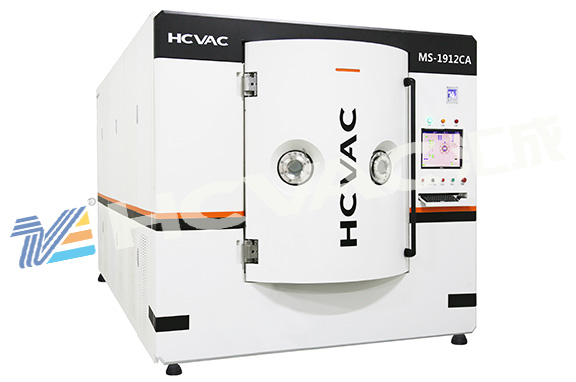PVD vacuum coating machine coating technology is ubiquitous in daily life. Most parts of everyone’s mobile phone are coated with a color film or functional film to meet people’s daily life levels. The tableware, knives, hardware decorations, etc. we use every day are all coated with a thin layer of PVD. So how does Pvd coating realize these technologies? What are the coating methods? Below, the editor of Huicheng Vacuum will give you a detailed introduction, hoping to help you:
The basic technical methods of PVD vacuum coating machine include vacuum evaporation, sputtering, and ion plating (hollow cathode ion plating, hot cathode ion plating, arc ion plating, active reactive ion plating, radio frequency ion plating, and DC discharge ion plating). The above are the most commonly used ones. pvd coating technology
electron beam evaporation
Electron beam evaporation uses a focused electron beam to heat the evaporation source, causing it to evaporate and deposit on the surface of the substrate to form a thin film.

Features: Vacuum environment; the evaporation source material needs to be heated and melted; the base material is also at a higher temperature; a magnetic field is used to control the evaporated gas to control the thickness of the coating.
sputter deposition
Sputtering is a thin film deposition technology associated with gas glow discharge. There are many sputtering methods, including DC sputtering, RF sputtering and reactive sputtering, etc. The most commonly used ones are magnetron sputtering, intermediate frequency sputtering, DC sputtering, RF sputtering and ion beam sputtering.
Features: The vacuum chamber is filled with inert gas (such as argon) required for discharge. Under the action of a high-voltage electric field, the gas molecules are ionized to produce a large number of positive ions. The charged ions are accelerated by a strong electric field, forming a high-energy ion flow that bombards the evaporation source material (called the target). Under ion bombardment, atoms of the evaporation source material will leave the solid surface, sputter onto the substrate at high speed and deposit into a thin film.
RF (radio frequency) sputtering
The frequency used by RF sputtering is about 13.56MHz. It does not require a hot cathode and can be sputtered at lower air pressure and lower voltage. RF sputtering can not only deposit metal films, but also insulating dielectric films of a variety of materials, so it can be used in a wide range of applications.
arc ion plating
Cathodic arc technology uses low voltage and high current to ionize the target material into an ion state under vacuum conditions, thereby completing the deposition of thin film materials. This technology has a higher ionization rate and better thin film performance.
filter cathode arc
Filtered cathodic arc (FCA) is equipped with a high-efficiency electromagnetic filtration system, which can filter out macroscopic large particles in the plasma generated by the arc source. Therefore, the prepared film is very dense, flat and smooth, has good corrosion resistance, and is integrated with the body. Very strong.
The above are several common coating methods for
pvd vacuum coating machines. They are some of our common coating methods. They are also the most widely used and common coating methods.



